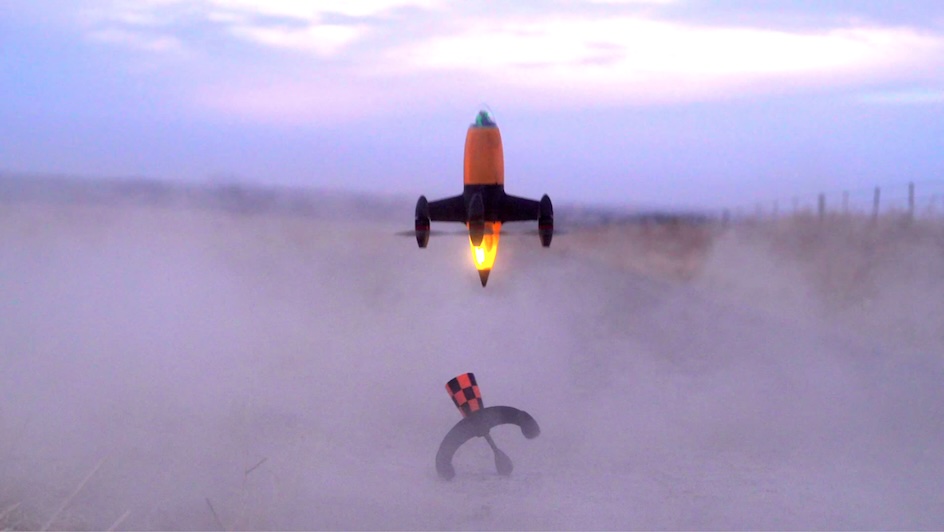#ThrowbackThursday – 16 March

To quote French poet Jean Cocteau: “History is truth that becomes an illusion. Mythology is an illusion that becomes reality.”
As one delves deeper into the bowels of history, the illusions of legends, fables and folktales become manifested as certain truths. What you do with these truths (and what you can learn from them) is entirely up to you.
With that being said, here are three events that went down in history on 16 March:
1792 – Death Mask
A mask can only shield your identity for so long. Halloween, superhero movies and mask balls are examples of this – 231 years ago, King Gustav III of Sweden learned this in a most tragic way.
Wearing a plumed cocked hat, a billowing Venetian cape, grey clothing (which sported the star of the Royal Order of the Seraphim) and a papery mask with a sharp nose, King Gustav III attended a mask ball at the Royal Opera House in Stockholm. A patron of the arts, he founded and constructed the opera house ten years before. Ironically, the beloved place he frequented would be the scene of his attempted assassination.
The king was not a popular figure among the nobility; he vocally opposed their abuse of political privileges and abhorred their corruption. He worked towards reform, which slowly but surely made aristocracy less exclusive and more inclusive towards commoners. He also didn’t impress with his failed campaign during the Russo-Swedish War that ended two years before. As such, eight members of the Swedish conspired to assassinate him, and it would be at the mask ball at the opera house.
After dining on a meal with his friends, King Gustav III proceeded to the mask ball on 16 March. He had been warned of an attempt on his life via an anonymous letter, but he chose to ignore it. As he entered the foyer of the opera house, he found himself surrounded by three members of the co-conspirators: Count Adolph Ribbing, Count Claes Fredrik Horn and Captain Jacob Anckarstrom, who recognised the star on his chest. When one of them greeted the king in French, Anckarstrom shot the king in the left side of his back with a pistol.
Unfortunately for them, the king was wounded, but not dead. Escape was futile as the doors were barred and the police had everyone unmasked. It was only the following day that Anckarstrom was arrested and confessed to the shooting. He was executed for his crimes; Horn and Ribbing were also arrested and sentenced to death, but were acquitted and exiled from Sweden. The remaining co-conspirators were imprisoned and deprived of their nobility.
King Gustav III died on 29 March due to complications from sepsis and pneumonia. The masquerade outfit he wore stands today in the Royal Armoury Museum in Stockholm. His death has since been immortalised in countless paintings, books and – you guessed it – operas.
1900 – Knossos Unearthed
At the beginning of the 20th century, a lost city on the Greek isle of Crete was rediscovered, lifting the lid on a history once lost to the sands of time.
Although evidence of a Bronze Age city was discovered by a Greek businessman/amateaur archaeologist in 1878, Sir Arthur Evans – a famed British archaeologist in his own right – was the first to excavate the land where it was located. Purchasing a tract of land in Crete in 1899, Sir Evans set about excavating it so as to properly locate the ancient city of Knossos.
One of the oldest cities in European history, it was the capital of Crete and home to the Minoan civilization. It was said to be the site of the grand Palace of Knossos, in which the mythological King Minos resided. There, the king apparently constructed a labyrinth, which was inhabited by a fearsome minotaur – half-man, half-bull, the minotaur stalked the labyrinth and feasted on human flesh. It was ultimately killed by the Athenian hero Theseus.
On 16 March 1900, Sir Evans’ efforts bore fruit: the ruins of the Palace of Knossos, covering 2.5 acres of land, were discovered. For the next five years, he and his excavation team unearthed the palace, which consisted of 1 000 interlocking rooms, a throne room, workshops for artisans, and areas for storage and food-processing areas. Artefacts such as bronze figurines, pottery, frescoes and jewellery of gold and ivory were also discovered, including a drinking cup in the shape of the bull.
And, if the palace plans are anything to go by, there was indeed a labyrinth of sorts, which may suggest that the legend of the minotaur might not be all bull after all!
1963 – Happy Birthday to the Late, Great Kevin Smith
Today would have marked the 60th birthday of actor Kevin Smith.
Born in New Zealand in 1963, Smith was known during his school days as a hunky rugby player who aspired to play for the national team. While studying at university, he received a concussion during rugby training and was sidelined. His wife, Suzanne, saw an advertisement for a casting call for an Elvis Presley tribute show and encouraged Smith to audition for it. Once he landed a role on the show, his acting career began.
Smith rose to prominence on various television shows, stage plays and films, but his notable roles include Ares, the hunky and sensuous God of War on both “Hercules: The Legendary Journeys” and “Xena: Warrior Princess”.
Alas, his life ended too soon: while filming away in China for the martial arts film “Warriors of Virtue 2” in February 2002, Smith fell several stories to his death from a prop tower. Suffering devastating head injuries, the 38-year-old went into a coma before he was taken off life support nine days later.





















